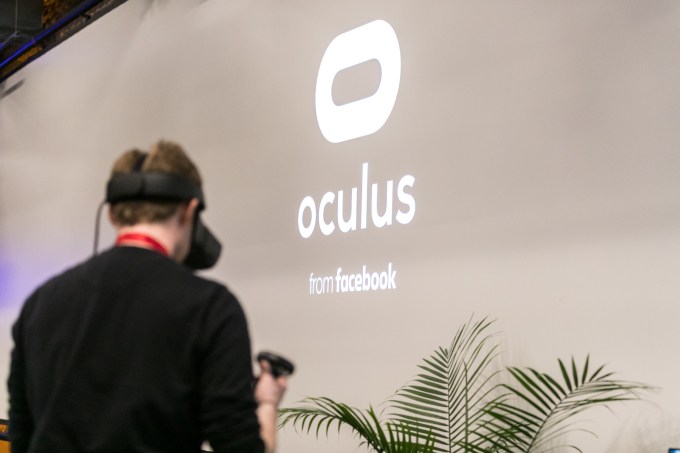More than three years after Facebook released one of the biggest gambles in its existence, a virtual reality headset it paid billions to launch as its own, the company has grown more embattled but its moonshot VR flagship has grown safer.
Facebook’s sequel to the Oculus Rift is not the Rift 2, it is the Rift S. Just as the iPhone naming scheme denotes the tock to a tick rather than a full revolution; the latest product is a hardware update, albeit a pretty minor one, more of a 1.2 than a 2.0.
It wasn’t always going to be this way — the company’s founding CEO had other plans. But the Rift S represented a way for Facebook to push the accessibility of its most high-end headset and likely the profit margins of the cheaper-feeling headset, which does cost $399 versus the original Rift’s $349 price tag, a number that danced and dwindled its way down from a Rift + Touch launch price of $798 at the end of 2016.
[gallery ids="1819661,1819654,1819652"]
The hardware design isn’t really the story that Facebook and Oculus are pushing with the Rift S. The hardware is a product of sacrifices that give the entire headset a lower-end feeling than the Quest or Go, it was largely built by Lenovo after all; as such this release is mostly about the software advancements.
The built-in “Insight” tracking is the highlight and lowlight of the release. It’s undoubtably a downgrade from the full capabilities of its predecessor — while the headset tracks itself very well, I would frequently lose tracking on the controllers on the cameras’ peripheral– but it also makes the system considerably easier to set up and maintain. Gone are the external sensors and their damn driver updates, gone are the constant needs for recalibration when a tracker was bumped out of place — this is a headset that learns from your space.
The external sensor system on the original Rift required three spaced out sensors in order to fully capture the total range of body motion. The headset only came with two sensors which minimized these capabilities and forced game developers to build titles that would constantly lead users to reorient themselves towards the sensors. No such reorienting is needed with the Rift S which brings the tracking cameras into the headset itself.
Features like the updated “Guardian” boundary setup and the passthrough camera that activates once you leave the safe space showcase some of the key learnings of the past few years and some of the added benefits of the onboard tracking. All of this feels very natural and mature.
While the headset’s onboard tracking feels great, the experience for controller tracking is more hit-or-miss. Common in-game motions like examining an object and turning the top of the controller away from you can lead to briefly obscuring the tracking rings and thus temporarily losing tracking. It always seems to recover, but there are moments in games where you are being chased and need to shoot behind you or grab something offscreen while maintaining focus on an object. These are moments where you see some short-sightedness in Oculus’s choice.
My first impressions of the Rift S were less than stellar, but after getting it in my home for some lengthy VR sessions, I’ve warmed up to it a little bit. It still doesn’t feel like a proper upgrade to a flagship headset that’s already three years old, but it is a more fine-tuned system that feels more evolved and dependable. There are still certainly some things I don’t like…

Things that are subpar:
- The controller tracking system isn’t robust enough for the demands of VR movements, you will notice and frequently feel the outside edge of the tracking boundary in intense gaming sessions.
- The lack of adjustable displays to account for the differing distances between people’s eyes means that the one-size-fits-all headset gives a less optimal experience for certain users. I am one of those users that falls just outside of that sweet spot, something that made the headset a bit less comfortable on the eyes than its predecessor for me.
- The original Touch controllers were better and more ergonomic, with the headset blinding me I put these controllers in the wrong hand roughly 50% of the time.
- The lack of built-in headphones was an annoying choice, the near-ear speakers are better than expected but don’t isolate you from the world, a concept that the entire headset is sort of built around.
- The face padding is far less comfortable or durable than the Oculus Go or Oculus Quest, something that feels a bit odd for the top-of-the-line experience.
Things that aren’t as subpar as I had feared:
- The switch from OLED to LCD panels feels like a downgrade on paper, but the way the sub-pixels are laid out on the higher resolution Rift S display gives a much more crisp image even if the LCD screen’s blacks feel a bit grayer. Running at 80hz versus 90hz isn’t a great choice.
- I like the flexible head straps of the rest of Oculus’s product line, but the halo design that Lenovo lifted from Sony feels quite comfortable here and given that it’s a PC-tethered system there aren’t unfortunate portability trade-offs like there were with the Mirage Solo headset.
- I still prefer the build on the previous generation Rift, but the headset feels less clanky than I detailed in my hands-on.
It’s a headset that will offer more pleasant on-boarding and usage to new customers, but for what is supposed to be the industry’s leading high-end headset, Oculus has taken a small step back in performance.
For new customer that are looking for something more high-end than the Quest, the device still offers a lot of advantages. You’ll have some time to make a choice, pre-orders are live for the headset today, but it doesn’t ship until May 21.
from TechCrunch https://tcrn.ch/2V6bpUo
via IFTTT

Comments
Post a Comment